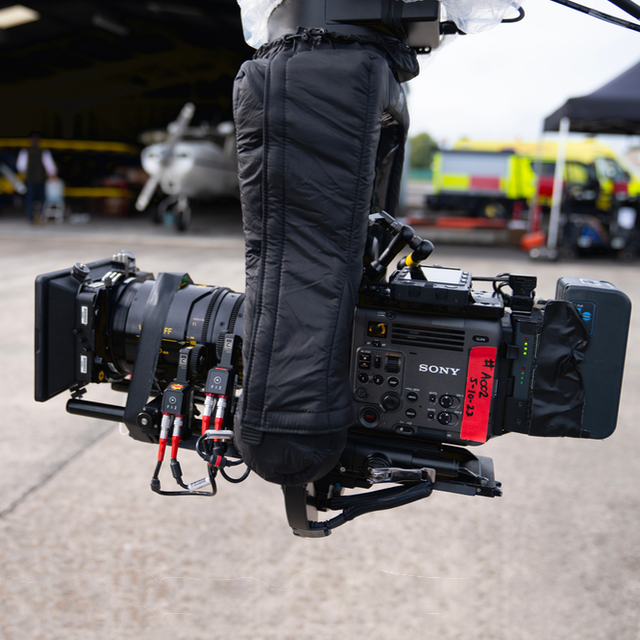Scene Deconstruction with Maura Morales Bergmann ACC
Deconstructing key scenes from two of her most recent projects shot with VENICE: Le Terme di Terezín (2023) and Cien años de Mónica (2022).
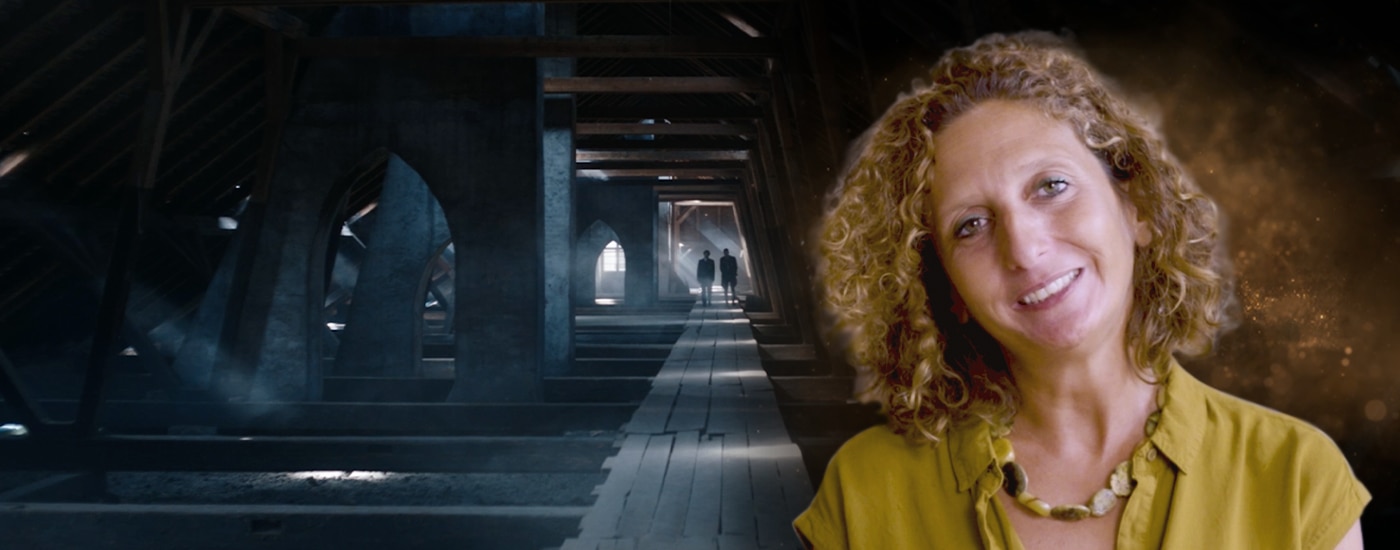
Introduction
Maura Morales Bergmann is an Italian / Chilean cinematographer who graduated from the Centro Sperimentale di Cinematografia (CSC) in Rome, then worked as assistant and camera operator. From 2007, her work as a cinematographer has premiered at many international film festivals, winning multiple awards. In this Deconstruction article, Maura takes us behind the scenes as she describes some of the techniques she used to film four very different scenes from her two of her most recent projects shot with VENICE. Le Terme di Terezín (2023), a harrowing WWII drama shot inside the infamous Terezin concentration camp, and the docu-drama Cien años de Mónica (2022).
Scene Deconstruction: Insights
- Mirrors can be used as an alternative to bulky lights that require power to reflect light into different parts of a scene. Just as you would with a light, you can add diffusion in front of the mirror to soften the light. Or you can use a gobo, flags or other objects to shape and modify the reflected light.
- Haze is commonly used to make beams or shafts of light visible within a scene. This can help enhance the sense of depth or add texture to otherwise empty areas of a shot. Haze tends to differ from fog, generally haze is finer and more thinly dispersed. A haze machine normally includes a fan so that more air passes through the machine so that the haze is less concentrated but also more evenly distributed within a larger volume air. The most dramatic effect is achieved when you have strong well defined light beams against a darker background.
Le Terme di Terezín: Train Scene
First, we will look at three scenes from the film Le Terme di Terezín which tells the story of Antonio, a Jewish Italian clarinet player, and Martina, a Jewish Czech violinist, who fall in love with each other in Prague during World War II. Shortly afterwards they are deported to the Terezin concentration camp where they stage an incredible series of cultural activities that became essential survival tools.
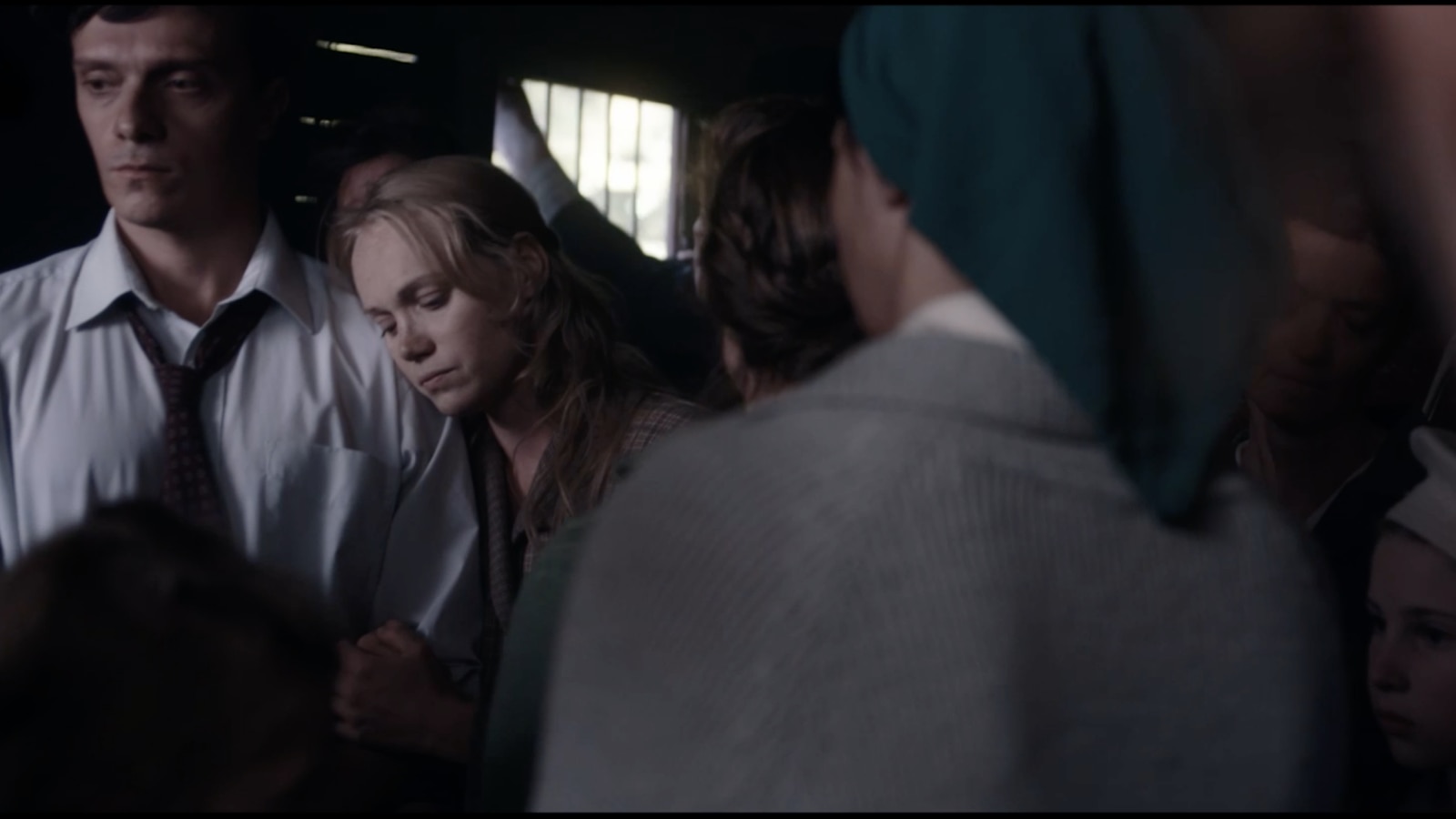
The couple are deported by train along with many other Jews. Their rail journey was filmed inside a small goods wagon. In this scene, to give the impression of a highly confined space, the cast were concentrated into just one end of the wagon and the wagon was moved along the railway line to provide a realistic sense of motion. Natural light entering the wagon through small holes and openings was used to create small pools of light in the otherwise dark interior. The light constantly changing due to the train’s movement from open fields to areas with trees.
Then to provide a very human point of view of the train arriving at its destination Maura chose to use the sudden and dramatic impact of very bright exterior light flooding into the otherwise dark interior of the wagon as its doors are slid open.
Defocussing the shot slightly as the doors are first opened adds to the sense of the occupants being dazzled by the intensity of the light.

Le Terme di Terezín: Flashback Scenes
For the film’s flash back scenes, a warmer colour palette was used to contrast the cold and oppressive colour palette of the concentration camp scenes.
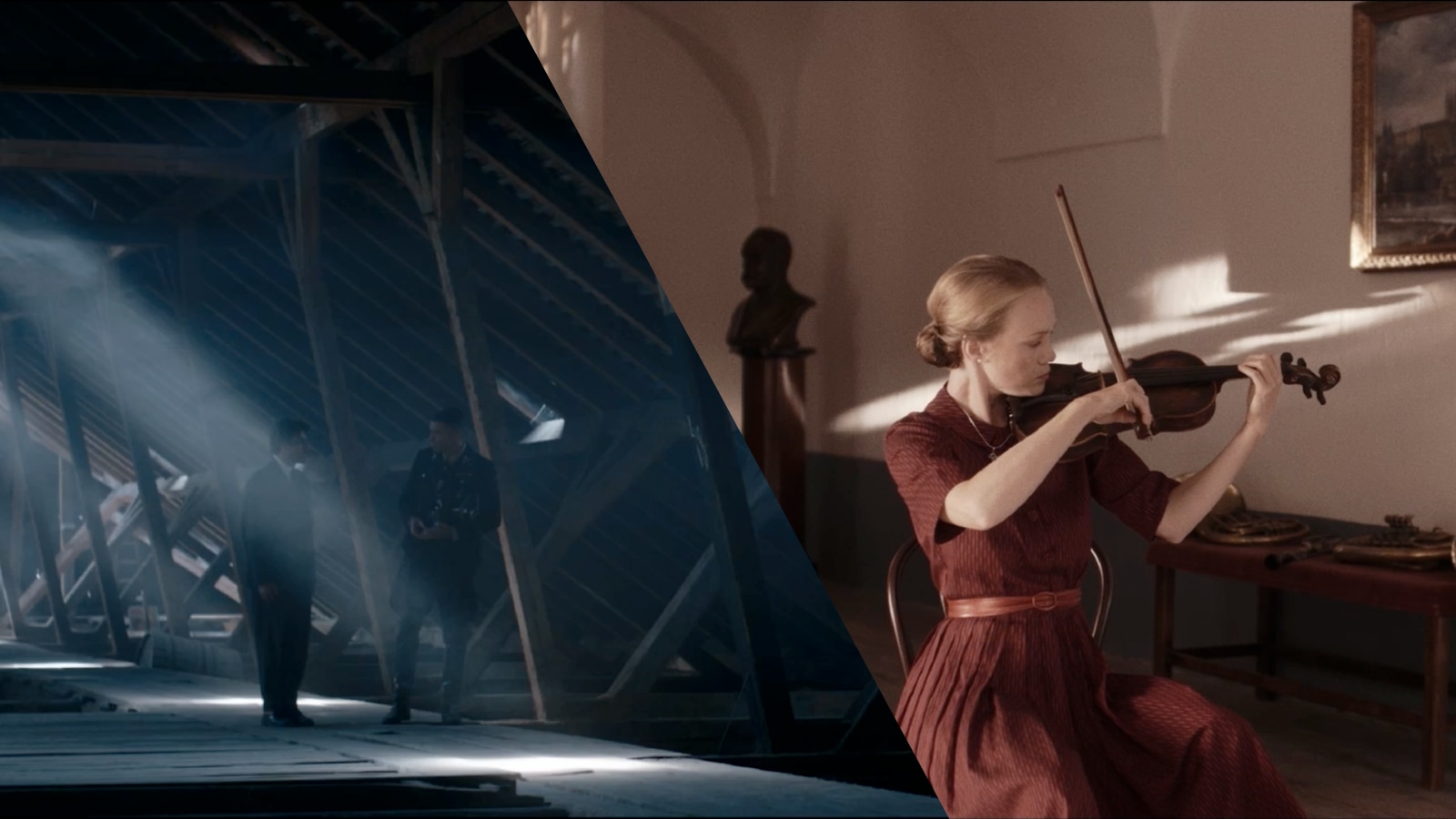
Cool light [Present Day] / Warm Light [Flashback]
For the scene where we see Martina playing the violin in a large open room, Maura had originally planned for different camera angles and lighting to those that ended up being used. When the crew arrived at the location, they saw that the natural light coming through one of the windows of the room created a very pleasing look, so she altered the camera angles and her lighting to take advantage of this natural light.
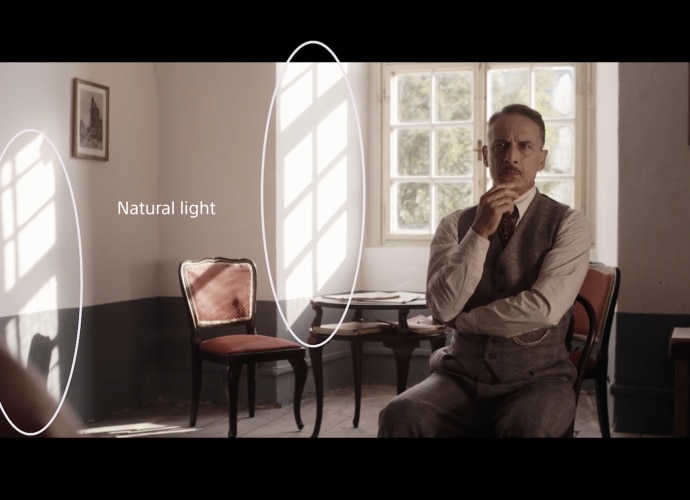
A mirror was used to re-direct some of the natural light and a diffused M18 HMI provided a soft light source to compliment the hard natural light.
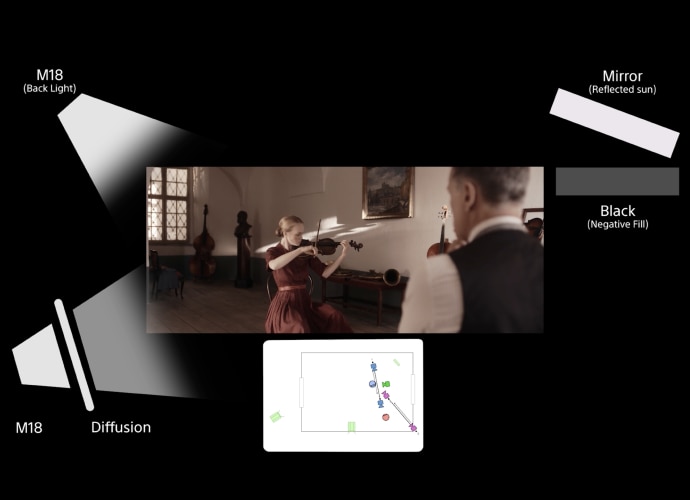
An additional M18 was placed outside a window at the back of the scene as a backlight and black negative fill was used to increase the contrast. Maura is keen to point out that an important part of her job is to adapt and to improvise where necessary.
Le Terme di Terezín: Roof Scene
For the roof space scene Maura insisted that it should be shot on a bright sunny day between 12pm and 2pm so that bright shafts of light would stream into the dark space though the small roof windows. Haze was used to accentuate the light shafts and a 4K lamp was used to add some light to the far end of the long space.
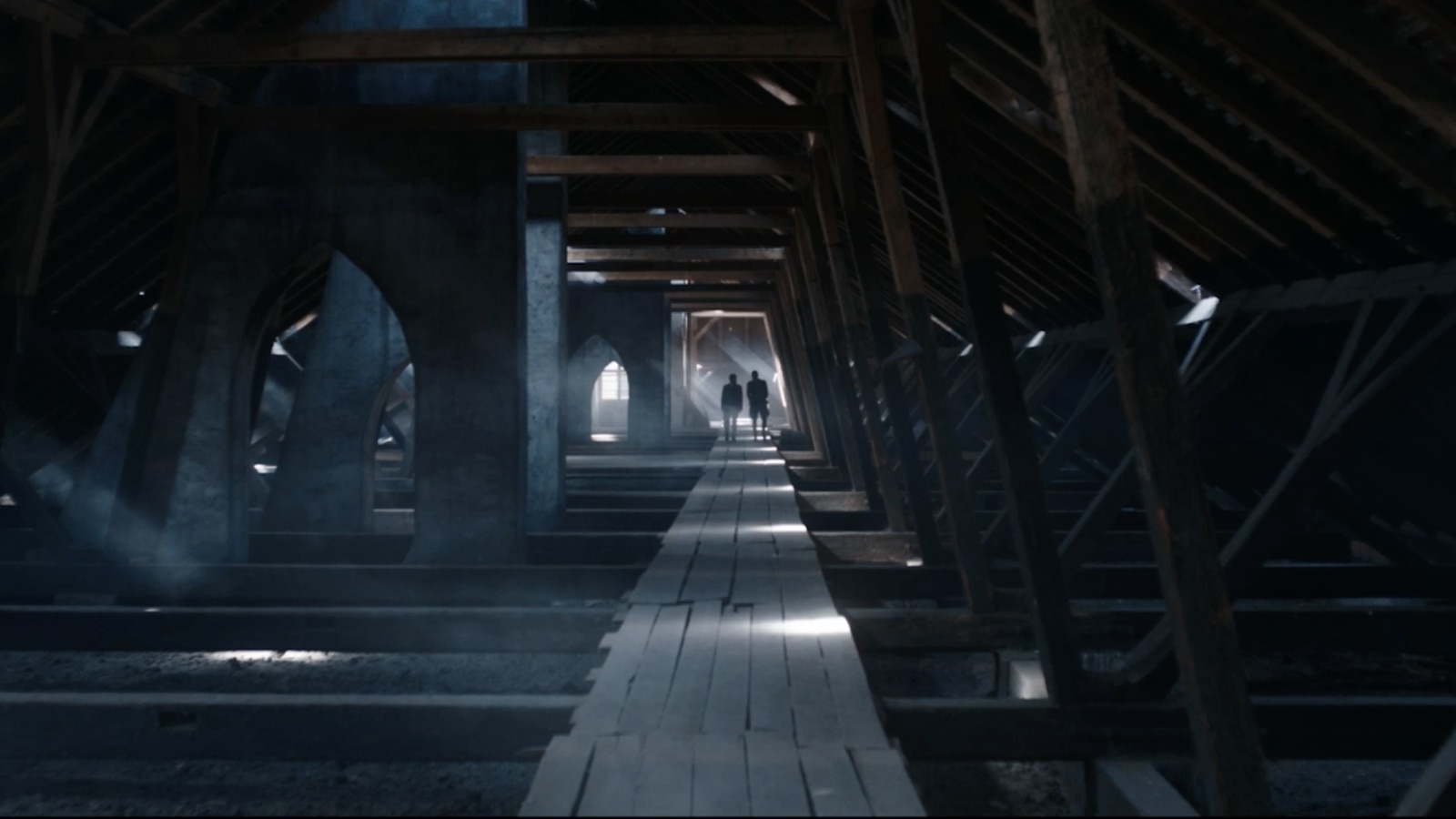
The use of pools of brilliant light along the length of the scene help to create a strong sense of depth and add points of interest to the dark interior. Maura felt that VENICE’s huge dynamic range was highly beneficial for this type of high contrast scene. But to help moderate the intensity of the natural light highlights against the deep shadows of the darkest parts of the scene she used a Black Satin filter on the camera.
Maura really liked the striking appearance of the almost blown out highlights against the darkness of the rest of the space.

Cien años de Mónica: Tree Scene
The final scene we deconstruct is from the film “Cien años de Mónica”, a film about the first feminist woman in Chile. A film that Maura shot with no budget for lighting. In this scene we see two young girls standing beneath a line of trees.
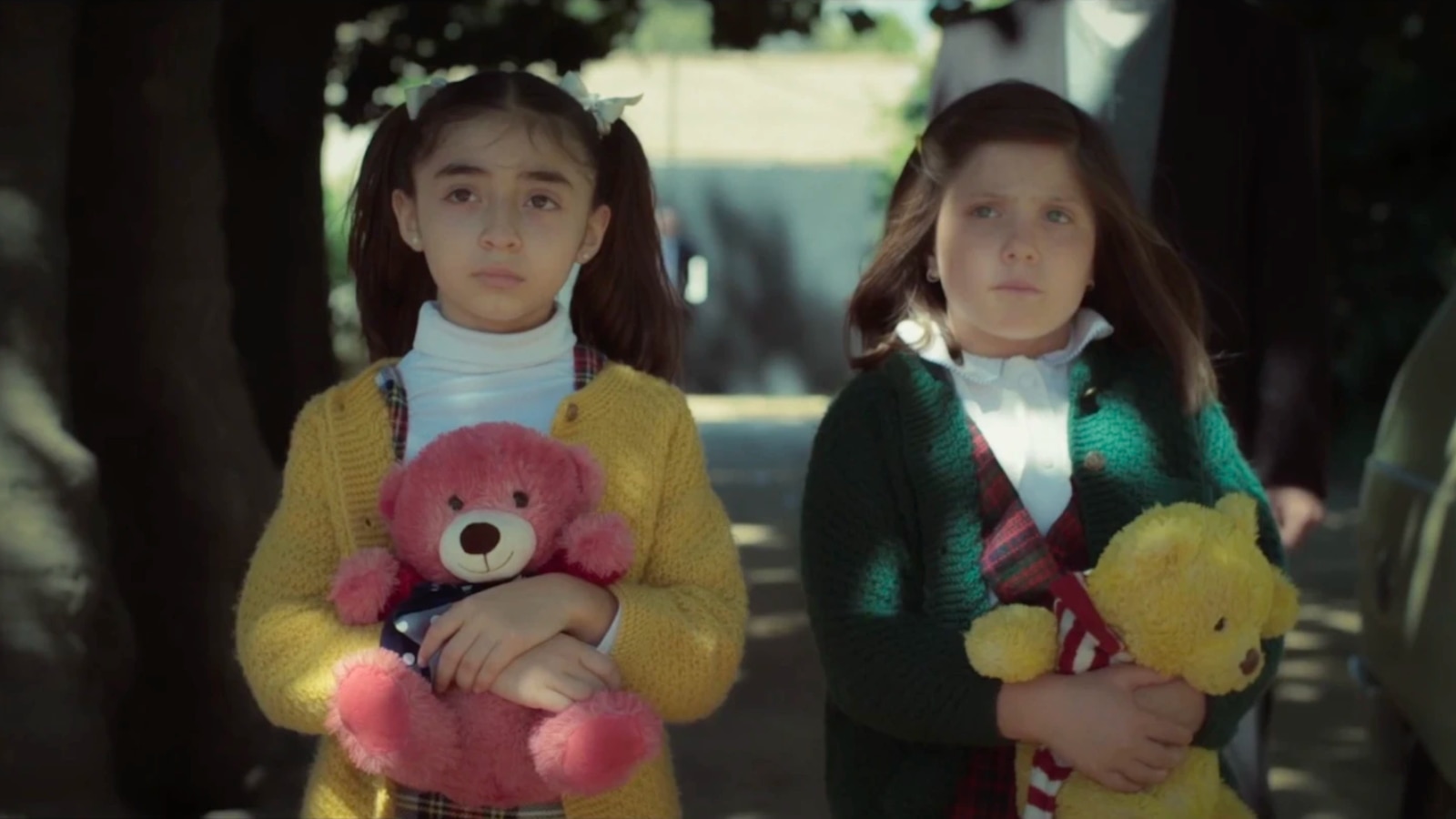
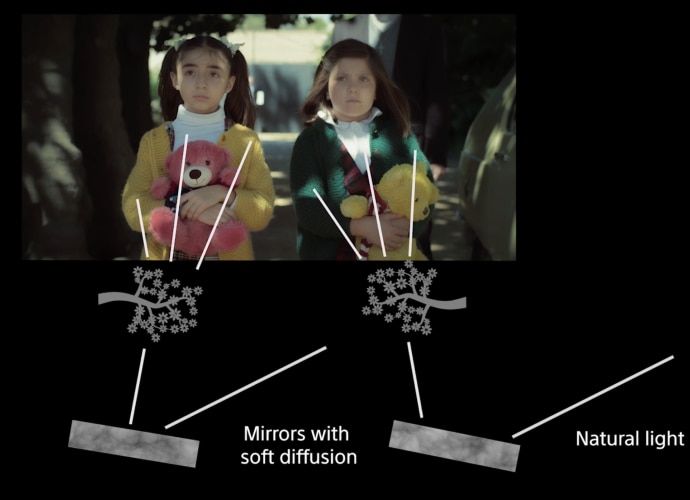
There are areas of light and shadow from the sun shining through the trees that can be seen in the background as well as areas of gently moving light and shadow on their faces. To create this effect, Maura and her gaffer use gently diffused mirrors to reflect sunlight onto the girls’ faces. Then small tree branches were gently waved in front of the mirrors to create the impression of leaves and branches moving in a gentle breeze. The effect is completely convincing and shows what can be done with little or no budget and clever thinking.
To learn more about Maura’s extensive and clever use of natural light while filming these scenes, do watch the video.



